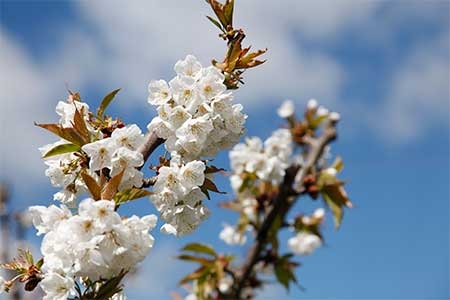Cherry fruit buds that formed during last summer are showing great promise across most of the cherry growing regions of Australia.
Chill requirement has been good, and soil moisture in most areas is sufficient at this point.
Unfortunately there could be issues outside the control of growers that will affect harvesting, packing and exporting this season, including:
• restricted movement of workers from interstate
• fewer visa workers
• diminished air freight
• possible trade issues.
Consequently it is imperative that growers take action now to grow premium quality cherries—action that minimises the possibility growing small fruit that would exit the grading lines for waste. The result will be greater demand for your fruit (return sales), returns and profitability.
Crop load management videos
Cherry Growers of Australia have produced a number of excellent crop load management videos.
These are available from their online Cherry magazine (e.g. see here).
Presenters highlighted thin wood removal, bud cluster counting, and focused on pruning methods to remove wood that does not deserve to stay on the tree.
These presenters are equal to the best in the world and growers need to take notice and act on their advice.
Act now to grow bigger fruit
Having long been an advocate for this type of advice, I will now repeat some of what I stated in a column several years before.
Firstly, check out the cherry varieties that are the most prolific in their display of fruit bud clusters such as Van, Lapins, Simone and Sweetheart.
Look at the number of bud clusters that are found on a typical section of bearing wood that is one metre long. Then consider this:
• Are there too many bud clusters?
• Will there be enough leaf area to grow all this fruit to a minimum size of 26 millimetres?
If you decide from these observations that you won’t be able to grow fruit to the minimum size, then action needs to be taken to reduce the number of bud clusters. This can be done in a number of ways:
• Removing a limb will remove a percentage of bud clusters from the tree; and improve light penetration through the tree. Remember that you are farming light, if light fails to penetrate through the canopy, then fruit buds will not set in the lower part of the tree.
• Pruning back the lengths of budded wood by a third to a half (depending on how much you need to reduce the crop).
• Removing fruiting wood thinner than a pencil, or shortening back of fruiting wood that has become thinner with each year of growth. Keep in mind that cherries growing on pendulous thinner wood will contain less calcium and be more prone to pitting and have less shelf life.
• Removing bud clusters on vertical fruiting wood. This can be done using a gloved hand to create more space between fruiting sections on a limb; or by removing bud clusters on the inside of a limb using a gloved hand or stroking with a pair of loppers.
If you are able to complete this task, then it is also important to look at the other varieties in the mix and make an assessment of their crop potential and what needs to be done to enhance the value of the crop prior to harvest.
Don’t delay, blossom is breaking.
See this article in Tree Fruit August 2020






















